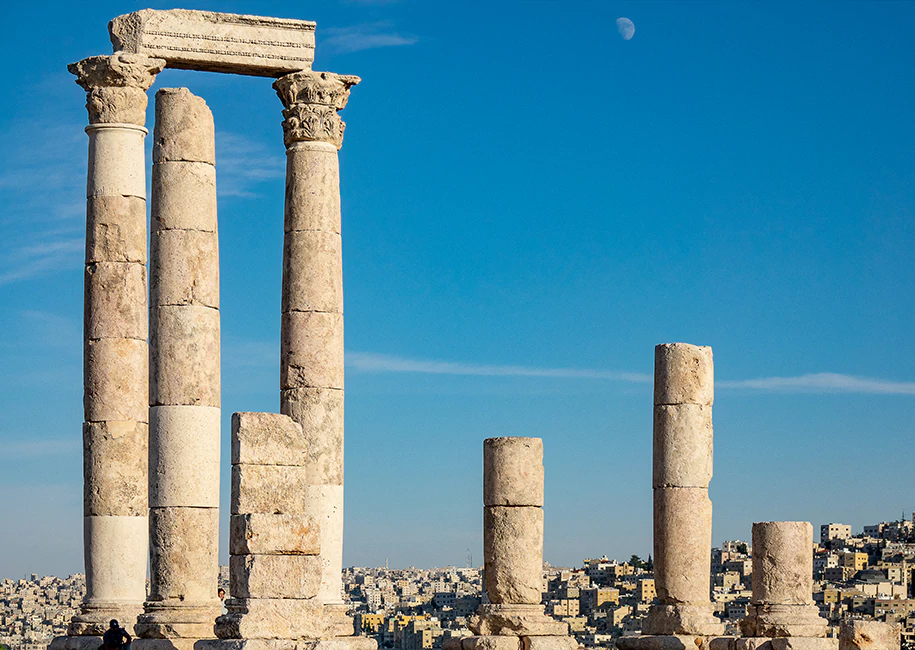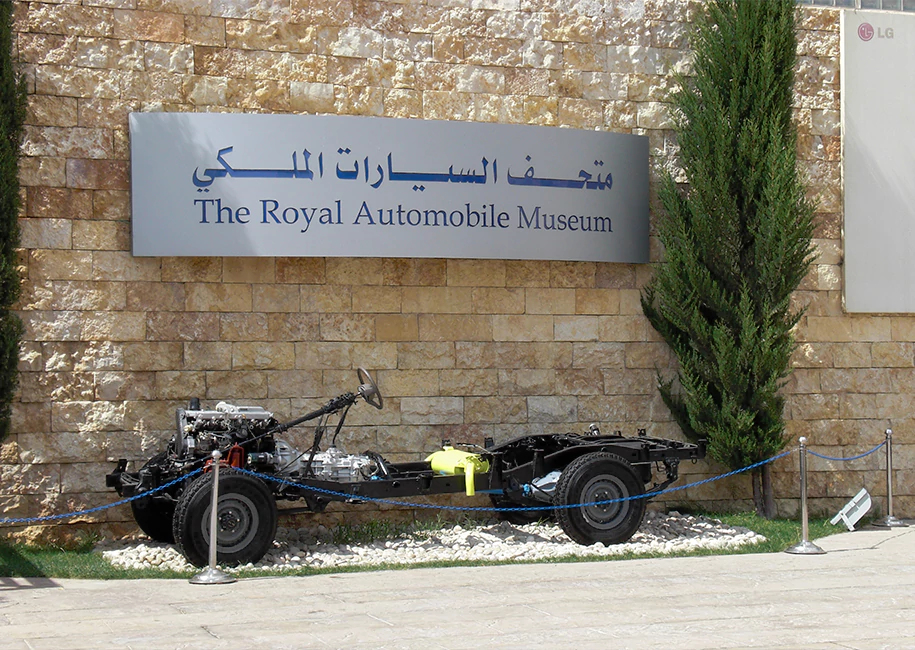
Amman City
"Where old meets new"
The city of Amman is the capital of the Hashemite Kingdom of Jordan and the center of the Capital Governorate. It is the largest city in the Kingdom and one of the largest Arab cities in terms of population, The city is located in the center of the Kingdom, on a latitude of 31 north latitude and longitude 35 east in a region where the mountains abound, so the city grew up in the valleys between the mountains first, so it overwhelmed its inhabitants, so they climbed to its slopes and continued to expand across its peaks until the city spread with its borders over 20 mountains.
Amman is considered the commercial and administrative center of Jordan and its economic and educational heart, as Amman has become a magnet for many Arab communities for its distinguished location and contemporary architecture, as it attracts many tourists annually from Western Europe, North America, Japan, Australia, and from neighboring and neighboring Arab countries, and many families of the Arab Gulf countries. In particular, as it has many tourist attractions in general and medical treatment in particular.
Amman is an ancient city built on the ruins of a city known as "the goddess of Ammon" then "Philadelphia" and then "Amman" derived from "the goddess of Ammon", and the Ammonites took it as their capital.
It is also one of the ancient Levantine cities that became the capital of the Emirate of Transjordan and then the Hashemite Kingdom of Jordan after its independence in 1946 from Britain.
Must See Attractions:
1. Citadel

Jabal al-Qalaa is one of the seven mountains of the city of Amman, which the Ammonites took from ancient times as the seat of their rule in the city, and then after them Greece, the Romans and the Byzantines who occupied the city respectively until it was conquered by the Islamic conquest in the seventh century AD, where it was built on the summit of the Umayyad palace.
Jabal Al-Qalaa is one of the most attractive areas for tourists in Amman, both externally and internally. And it is held on the shoulders of concerts, as it is considered one of the main celebration places that took place in the Jordan Festival, due to its location overlooking most areas of the capital Amman - especially the center of the country, where the area will be linked to the Roman amphitheater through a light train (ground train) or what is known as a car That will be allocated to transport tourists from the Roman amphitheater to Mount Castle and vice versa.
2. Roman Amphitheatre

The Roman Amphitheater is a Roman theater located in the eastern part of the Jordanian capital, Amman, specifically at the foot of Jabal Al-Joufah, on a hill opposite the Amman Citadel. A Greek inscription on one of the pillars indicates that this amphitheater was built in honor of Emperor Madrianus who visited Oman in 130 AD.
It is to this day the largest theater in Jordan. In front of the stage of the theater, which is surmounted by artists, there is a certain place in the middle of the theater, spectators can hear the sound from it in a clear way in all the theater stands. The stands are divided into 44 classes, in three main groups. The first rowset was used for the attainment of the people and dignitaries, while the second and third rows were intended for the rest of the people.
There are rooms behind the stage of the stage, which artists use to change their clothes and prepare to appear in front of the audience. The original stage platform building was about three stories high, higher than the columns in the Forum Square. There was a small temple at the top of the stage, carved into the rock, that had statues of Roman deities.
There are two small museums today on both sides of the stage, the Museum of Popular Life and the Museum of Folk Fashion. The first tells the evolution of the lives of Jordan's residents and their use of tools and furniture over the past century, especially rural and nomadic lives. The second museum deals with the subjects of traditional Jordanian and Palestinian cities fashion, ornaments and decorating tools used by women.
3. Al Souq (Local Market)
.jpeg)



It is the old economic and commercial center of Oman from the beginning of the century until the early eighties, and it is considered one of the most crowded places in the Kingdom, due to the diversity of its commercial field. Passing through the center of the country is Salt Street, which has important landmarks in the city on its sides, many shops, cafes, agencies, repair shops, exchange shops, antiques, and the eastern bazaars that foreign tourists flock to and that reflect the culture, people, and history of the country.
4. Royal Car Museum

The Royal Automobile Museum chronicles an important part of Jordan's political history, and the exhibits also reflect the history of the Hashemite Kingdom of Jordan through cars from the history of the reign of King Abdullah I Bin Al Hussein to the reign of King Abdullah II Bin Al Hussein.
Also, the visitor coexists with the atmosphere of the most important events that affected the Jordanian history through cars, by providing some of the sites for the displayed cars with video films, duplicate photos and archive pictures showing the story of each car and the occasion in which it was used.
Among the most important holdings of the museum: a Lincoln Capri convertible, model 1952, and King Hussein bin Talal used it during his studies in England, and was also used in a coronation ceremony in May 1953.